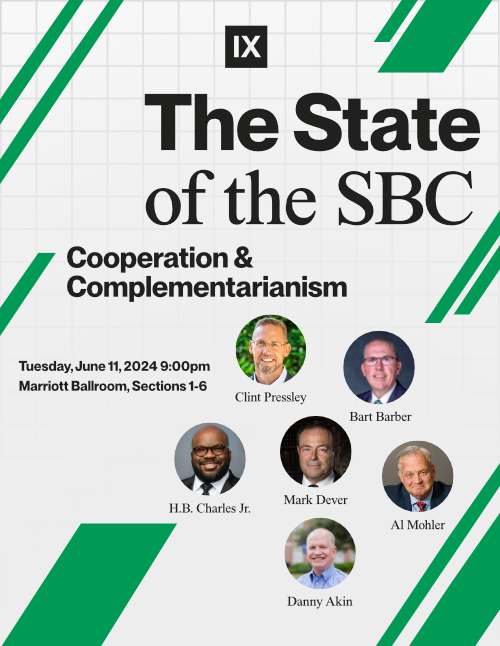Book Review: The Essential Jonathan Edwards, by Owen Strachan and Douglas A. Sweeney
Owen Strachan & Douglas A. Sweeney, The Essential Jonathan Edwards. Chicago: Moody Press, 2018. 438 pps, $22.99.
Fifty years ago, hardly anyone regarded the name of Jonathan Edwards as an influential Christian leader. Known mostly for his sermon “Sinners in the Hands of an Angry God,” Edwards was seen as a stuffy, white-wigged Puritan bent on condemnation and judgment. But more recent scholarship has painted Jonathan Edwards in a new light. Through the work of evangelical churchmen like John Gerstner, Iain Murray, and John Piper, Edwards has enjoyed greater respect and wider readership in recent decades.
However, with 73 volumes of published work, approaching the famed Northampton pastor seems daunting. This is precisely why Owen Strachan and Douglas Sweeney’s new book, The Essential Jonathan Edwards, is absolutely essential.
The book consists of five sections broken up into 26 chapters that guide the reader into Edwards’ life and thought. At the conclusion of each chapter, the authors offer points of application and exhort the reader toward further reflection.
LOVER OF GOD
Part One interweaves various elements of his biography. The authors explore his early life and education, his conversion and apprehension of the glory of Jesus Christ. As with the rest of the book, these early chapters are rich with Edwards’ own insights and meditations. As we read of his “true sense” of God, young Jonathan set out to commune with God in the deepest, most joyful way. It’s in these early pages we first encounter Edwards’ famous Resolutions.
Next, we’re brought into his early trials, as Edwards is called into ministry, marries his wife Sarah, and learns the hard lessons of pastoring a church in the footsteps of his legendary predecessor, Solomon Stoddard. The last few chapters of Part One bring us into the electrifying heat of the Great Awakening, at which point we’re introduced to Edwards’ writings, namely Distinguishing Marks and Religious Affections. After encountering the events surrounding the mission and passing of David Brainerd, we part ways with our man Edwards in Chapter 8.
BEAUTY
Part 2 exposes us to the marrow of Edwards’ theology, in particular his writings on God, Creation, Christ, the church, and the Trinity. A consistent undercurrent of Edwards’ theology was his focus on God’s beauty and perfection. We read an excerpt from his Dissertation Concerning the End for Which God Created the World, where he argued that,
God’s love to himself, and his own attributes, will therefore make him delight in that which is the use, end and operation of these attributes… So that in delighting in the expressions of his perfections, he manifests a delight in his own perfections themselves: or in other words, he manifests a delight in himself; and in making these expressions of his own perfections his end, he makes himself his end.[1]
In short, God supremely delights in himself. Edwards marveled at this glorious truth, and could not stop worshiping God in the face of it.
Edwards was also enraptured with the beauty of creation, as expressed in his unfinished work, History of the Work of Redemption. Highlighting his classic sermon “The Excellency of Christ,” we’re brought into a robust treatment of his view of the Lord Jesus Christ. Two final treatments of the Church and the Trinity round out the section. In the latter, we’re treated to the beauty of Edwards’ sermon “Heaven Is a World of Love.” Part 2 makes it clear that studying theology satisfies the soul because it provides a window into the person and works of God.
THE GOOD LIFE
In Part 3, we read about Edwards and the Christian life. This section is built on the work of several key sermons and texts, including the classic Religious Affections. Here, Strachan and Sweeney explore how Edwards understood the nature and effects of the Fall, true conversion, and what it means live out godly love and peace.
Lastly, we’re brought into a discussion on honoring the Lord through obedience. Strachan and Sweeney add their own insights:
Those who doubt their Christian profession need to know that only a godly life, coupled with the witness of the Holy Spirit and the encouragement of a church, will produce true confidence in Christ. None of us will obtain perfection (or anything close to it) until heaven, but the Lord has designed our faith to gain rich assurance when it is driven by an obedient, God-centered heart.[2]
TRUE CHRISTIANITY
Part 4 is perhaps the most timely portion of the book because it addresses the problem of nominalism. In the wake of the Great Awakening, thousands of people were professing faith in Christ, but time would tell whether or not their faith was real. In evaluating the Great Awakening, Edwards wrote A Faithful Narrative of the Surprising Work of God. This brief account of the spiritual happenings of New England circulated the globe, but it ultimately led to more questions than answers. How do you know if God is truly working? Edwards’ response came in Distinguishing Marks of a True Work of the Spirit of God. Built on his own exposition of 1 John 4, Edwards observed that true conversion would be marked by a love for Christ, a hatred for sin, a love for the Word, a love for the things of God, and a love for believers.
In chapter 21, we encounter powerful examples of true Christianity in the lives of David Brainerd and Abigail Hutchinson. These aren’t mere paper heroes, but full-bodied examples of robust faith amid trials and opposition. In Edwards’ evaluation, their faith remained vibrant until their earthly end. One difficult result of tirelessly laboring toward true Christianity is that those who reject the gospel yet insist on religiosity will inevitably attack. And attack they did. The last chapter of Part 4 chronicles the Northampton Communion controversy followed by Edwards’ eventual dismissal. The removal of Edwards from his own pulpit serves as a staunch reminder that challenging nominal Christianity may come at a high price, but it’s a price worth paying for bearing witness to the gospel of Jesus Christ.
HEAVEN & HELL
The final part of The Essential Jonathan Edwards brings us into Edwards’ views of the afterlife. Following a brief overview, we’re plunged into a sobering discourse on the reality of eternity, and brought into the pews to listen to “Torments of Hell Are Exceeding Great,” “The Justice of God in the Damnation of Sinners,” and “Sinners in the Hands of an Angry God”—a mere taste of Edwards’ fiery pulpit. These visions of hell and God’s judgment, frankly, are terrifying.
However, in surveying the unsettling images from the realm of destruction, we’re then able to apprehend the seriousness of our own sin and approach an appreciation for the mercy and grace of God. In the end, we see travel with Edwards in his sermon, “Heaven Is a World of Love,” and encounter theistic delights laid out in sacred Scripture. If there’s one thing that characterized the life and mind of Jonathan Edwards, it’s the joyful worship of the Lord Jesus Christ in all his splendor and glory.
CONCLUSION
The Essential Jonathan Edwards is a must-have for every Christian who wants to learn from a luminary like Edwards. But more than that, this introduction to Edwards’ broad corpus will be of use to any student interested in learning more about Scripture, theology, and church history. It’s jam-packed with theological exploration and pastoral insight.
Simply put, Owen Strachan and Douglas Sweeney have served the body of Christ well in providing such an encouraging and enlightening work. Whether one is new to Edwards or has long trusted him as a faithful friend, this volume will undoubtedly serve as a welcome companion.
* * * * *
FOOTNOTES:
[1] Strachan & Sweeney, The Essential Jonathan Edwards, 127.
[2] Ibid., 277.







